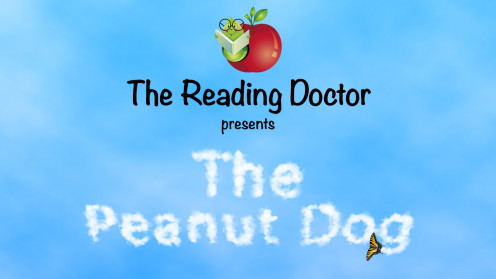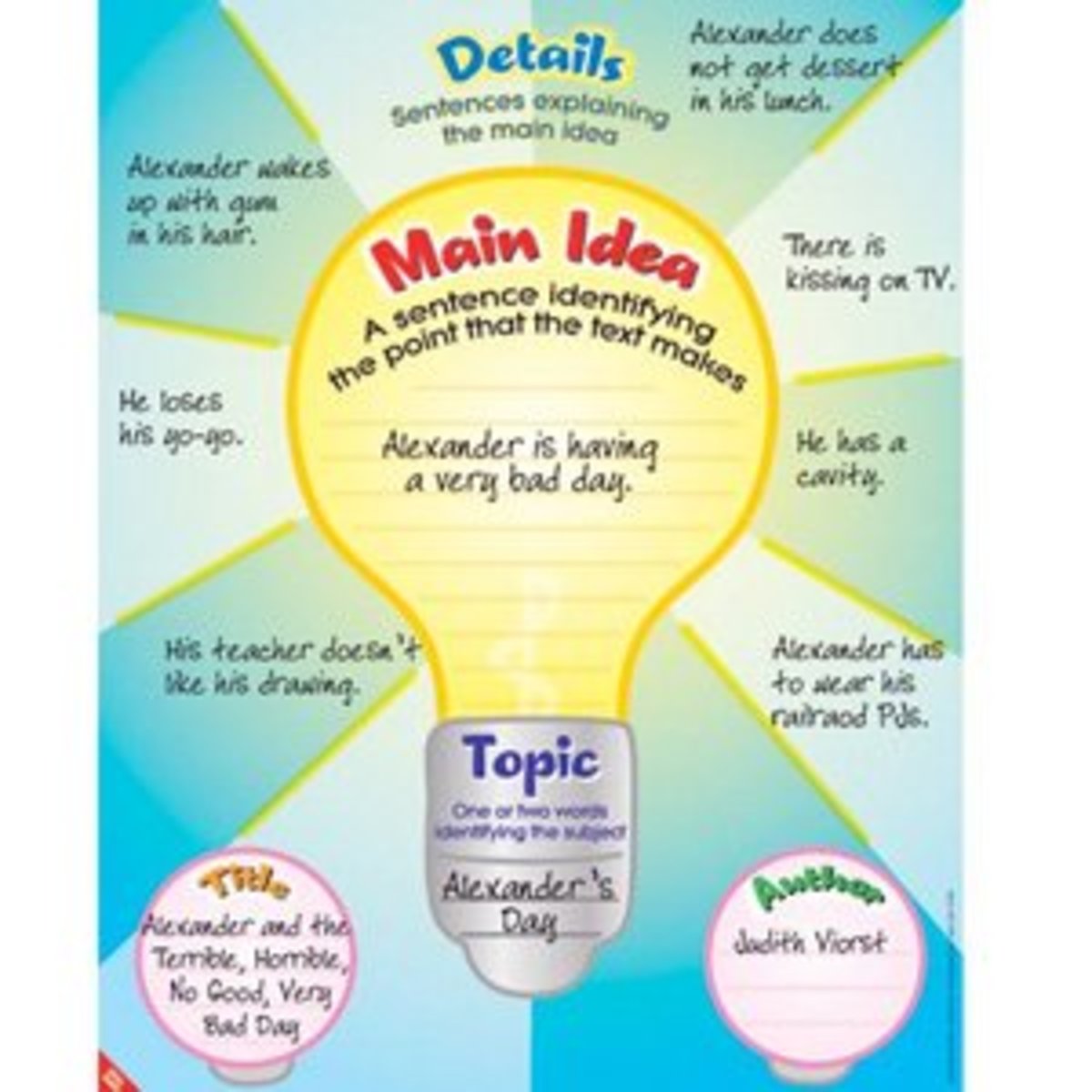How to Improve Children's Vocabulary and Comprehension As You Read Aloud

BEFORE READING
| DURING READING
| AFTER READING
|
|---|---|---|
Identify Purpose for Reading
| Discuss Story: Use K-W-L
| Retell Story
|
Preview Title, Author, Illustrator
| Make Connections: Text-Self-World
| Vocabulary
|
Predict (priming)
| Make Inferences
| Introduce, Extend, Review
|
Define Critical Vocabulary
| Self Monitor
| |
Vocabulary Discussion
|
Research-Based Strategies for Using Read Aloud Stories With Children
If you happen to be a teacher, or simply a parent who would like for your child to attain a higher level of comprehension or vocabulary, then I have a suggestion for you, one that is fun and easy. Research shows that the following activities will improve your child’s vocabulary and comprehension----provided you follow a few simple guidelines. In fact, reading aloud to your child is one of the best ways to make sure your child learns new vocabulary. A few simple strategies, however, are essential if this simple pleasure is to benefit your child and raise comprehension and vocabulary scores. The simple act of reading aloud to a child for enjoyment and learning is sometimes referred to as using read-alouds.
One of my favorite memories of my children’s growing up years is reading aloud to them when they were small. That’s one reason I was surprised when I read Stephanie V.W. Lucianovic’s “I’m Tired of Reading Out Loud to My Son, O.K.?” at the New York Times website in July. Lucianovic confessed to hiding certain books behind the bookshelf so she could avoid yet another reading----Richard Scarry’s Goodnight Moon, Slyvia Plath’s The Bed Book, Curious George. While her honesty is rather refreshing, reading aloud happened to be one of my favorite parental duties. I look back on those times fondly. But more than providing enjoyment----for those who enjoy reading aloud----read alouds can provide children with some valuable instruction time, without them realizing they’re having a lesson. Read alouds are great for parents, grandparents, and teachers. They are especially helpful for busy teachers trying to raise students’ comprehension and vocabulary levels.
The Time Factor
A common complaint among teachers, especially teachers of elementary grades, is that they have too little time for students to think about what they have read or work on improving vocabulary. Another concern of busy teachers is the lack of time for teaching content subjects. Santor, Chard, Howard, and Maker (2008) offers a solution for this dilemma. They suggest that elementary teachers pair narrative texts with informative texts and use the narratives as Read Alouds. Combining informative texts with fun, interesting stories in elementary classrooms not only saves instruction time, but recent research reveals that Read Alouds, if the teacher uses research-based strategies, can be an effective means for improving comprehension and vocabulary while including content area instruction at the same time.
The information in the chart is taken from “Making the Very Most of Comprehension Read Alouds to Promote Comprehension and Vocabulary” (2008). This information provides the strategy focus for activities before, during and after reading. (See Chart)
Before Reading
Before reading the story, the teacher establishes the groundwork for reading the story. The authors emphasize the importance of having students identify the purpose for reading first. Therefore, the first question the teacher asks is, “Is this an information book or a story book?” Next, the teacher uses the K-W-L chart and guides students through the process of thinking of “What I Know” about the subject or topic of the book. They don’t need to write a long list---just two or three things to activate prior knowledge and get them started thinking about the topic.
At this time, teachers can ask students to list some of the things they might “want to know” about the topic and fill in the W section of the K-W-L. They can continue adding to this section of the chart during the reading, too. Before reading, teachers discuss vocabulary critical for the understanding of the story. This article provides a script for the teacher to use in introducing concept vocabulary necessary for the story. Other vocabulary, those words not essential for understanding the story, should be discussed during the reading.
During Reading
The discussion of unfamiliar words during the reading is essential for vocabulary improvement. Students gained an additional 10% in improvement when word explanations were taught directly during the reading of the story, Biemiller and Boote (2006) found that while rereading stories improved students’ understanding of word meanings by 12%, an additional 10% gain occurred when word explanations were taught directly during the reading of the storybook. Besides explaining the meanings of unfamiliar words during the reading of the story, teachers can also teach text structure during a read-aloud.
For example, teachers talk about who, what, when, and where. The authors of this study suggest that the teacher use prompts, such as, “Tell me about a time when….” or “Can you tell me how that makes you feel…” These questions also focus on unfamiliar words from the story, thus giving students additional practice in using the word. Because of the interaction between teacher and students during the reading of the Read Alouds, students become familiar with the general structure of stories. Beck and McKeown (2001) found that “text talk” in early elementary classrooms when included as part of Read Alouds, increased students’ comprehension and vocabulary levels.
The remaining part of the K-W-L charts can be completed during the reading of the story. Students finished the K section of the K-W-L before reading the story. During the reading, teachers might stop and point out information they didn’t already know and suggest that students add the new information to the L section of the chart. Teachers can also take the opportunity to teach higher level thinking skills during this time. For example, it’s important to remind students that authors don’t tell us everything. Sometimes the reader has to figure out what the author is suggesting. Teachers may assign students to small groups of two or three, called book partners or book clubs. Most of the time, the teacher provides a question for discussion. For example, the teacher might ask students to turn to their book club character and share thoughts about who the main character is.
After Reading
The last part of the read-aloud involves retelling. The teacher uses a large chart and an overhead projector and models the retelling of the story using pictures and words. After the teacher models the retelling process, students retell the story to their book partner. In the retelling of the story, students would include why they liked or did not like the story.
Sources for Stories
As for finding good stories to read, several sources provide lists for choices. An organization called Read Aloud America is an excellent source for books appropriate for every age level. This organization, founded in 1955 for the purpose of encouraging families to read together, lists the top read alouds for each year. This site can be accessed at http://www.readaloudamerica.org/booklist.htm Caldecott and Newbery awards presented each year are always excellent book choices. The Newbery Award recognizes the best children’s book, and the Caldecott Award goes to the book with the best illustrations.
Of course, an excellent read aloud for grades 3-5 is The Peanut Dog, The Adventures of Speck and Buddy, which can be seen at www.doc-nancy.com. It is ready for licensing to schools or for purchase by individuals. Activities for The Peanut Dog are incorporated into a WebQuest at http://questgarden.com/q/speck under the topic, George Washington Carver. The story and WebQuest provide excellent research-based comprehension and vocabulary strategies. Whether you’re a parent, grandparent, or teacher-----if you enjoy reading to children-----you can follow the strategies described in this article and help the child you read to improve comprehension and vocabulary at the same time.








